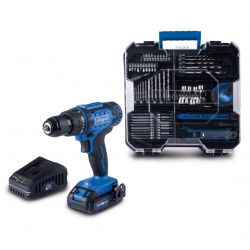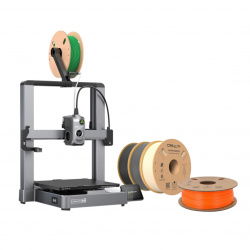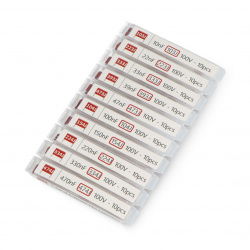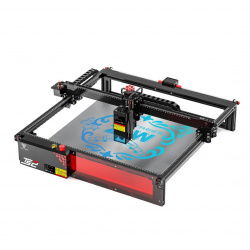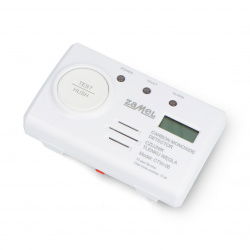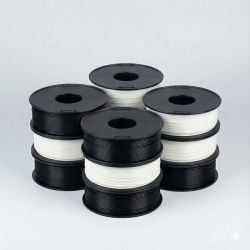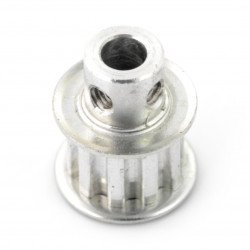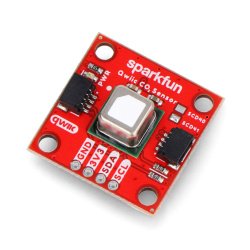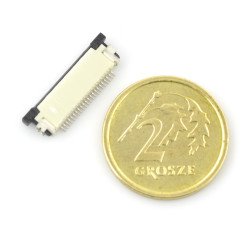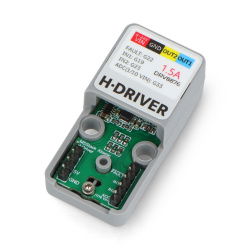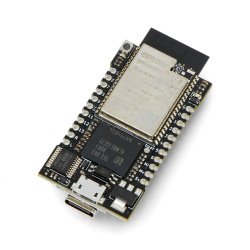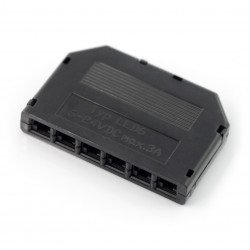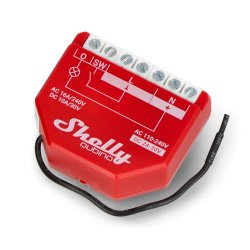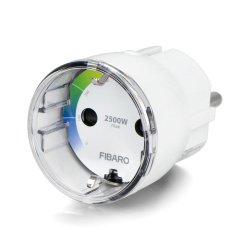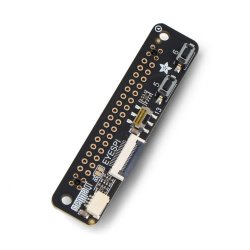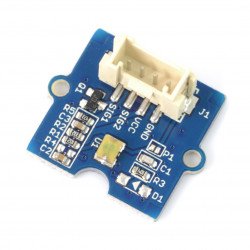In this category, you will find small and practical devices implementing or intermediating in the process of air conditioning and heating. These devices include, among others intelligent thermostatic heads that can be controlled via a Wi-Fi wireless network. The thermostatic heads offered by our store are supplied complete with a set of adapters that allow mounting the head on most types of sheet radiators. Wi-Fi controlled thermostatic heads can also be controlled by voice assistant or traditionally by manual adjustment. The designers also built-in the function of automatically switching off the heating after receiving a signal from the window opening sensor. We also offer Wi-Fi controllers supporting home ventilation, air conditioning and heating systems. You can also control heating from the phone using a dedicated mobile application. Wi-Fi controllers for indoor temperature control systems are compatible with the Android OS and Apple iOS specifications. We also offer traditional fan heaters with adjustable temperature and speed.
Air conditioning and heating
See also
- Anet 3D printers
- 24v relays
- Wireless mice
- Esperanza compressed air
- Outdoor LED lighting
- DJI Phantom drones
- Syma drones
- Fluorescent filament
- 2-core cables
- Power supplies 12v 10a
- DJI Mavic drones
- Conductive paint
- DJI Inspire drones
- Zortrax Filaments
- RPi Wi-Fi cards
- PLA Pro filaments
- Encoders
- Intel modules & kits
- Hexbug toys
- Magnetic balls
- DJI Mavic drones - drones and accessories
- Compressed air to clean the keyboard
- Tablets
- Intel starter kits
- Android Box Smart TV
- 2D printers and pens
- Banana Pi
- Photo traps
- GPS trackers
- Intel expansions & hats
- Resistors SMD 1206
- Aqara - home automation
- Smart ABS filaments
- Headphones
- Vacuum forming
- STM32 books
- Books about Raspberry Pi
- Chargers
- Dobot 3D printers
- String bags (zip bags)
- Intel - module accessories
- Refill filaments
- BeagleBone power supply
- Car handles
- Electrolytic capacitors SMD
- AGM batteries
- Alarm sirens
- Flsun 3D printers
- Tantalum capacitors SMD
- Sensors and alarms
- Motor capacitors
- Laminators
- RC cars and models
- Zortrax 3D printers
- Doorbells and peepholes
- Arylic sound modules
- Flexible filaments
- Khadas VIM
- Trilab 3D printers
- Goofoo 3D printers
- Bluetooth Speakers
- PowerBank mobile batteries
- Control equipment
- Linear actuators
- LED lighting
- Spare parts
- Webcams
- Urbicum 3D printers
- Raspberry Pi 2B+
- ATMAT 3D printers
- Mycusini 3D printers
- TinkerGen
- Weight meters
- Makeblock 3D printers
- DJI educational robots
- Silk Filaments
- Transport cases
- Orange Pi
- MakerPi 3D printers
- Sparky
- Abilix Krypton
- 3D printer Artillery
- Air purifiers
- SkriWare - educational robots
- Gas soldering irons
- Exta Free - sensors and modules
- LittleBits
- Spresense Sony
- Netronix RFID modules
- Rock Pi
- AST lighting drivers
- CubieBoard
- WowWee
- Coolseer home automation
- AMK - automation and control
- Smartwatches
Fan heaters - simple to use and very efficient
Fan heaters are small, portable household electrical appliances that allow you to quickly distribute heat energy in living rooms. This is especially convenient when traditional furnaces require a long heating time and the distribution of heated water through radiator pipes. The fan heater is a great alternative to traditional heating systems and is great for heating living rooms as well as workshops in basements and garages. Most often, fan heaters are available in the power range from 500W to 2500W. Usually, these devices allow for quick heating of rooms with an area from 10m2 to 20m2. The fan heater is most often single phase 230VAC at 50 Hz. The fan feeding circuit should be protected with a B10 fuse. Most often, fan heaters are made of plastic (polypropylene) housing and are built as second class electrical safety devices. This means that the power cable is two-wire (L- live wire, N- neutral wire) and the device has no protection earth terminal connection.
Fan heater - the principle of operation and functions of its device
In the construction of a typical fan heater, a spiral heater is used, which after switching on the supply voltage is heated to a high temperature due to the current flowing through it. Such a heater heats up very quickly, because just a few seconds after switching on the fan heater. Behind the heater is a propeller that is driven by an electric motor. Due to the rotation, the propeller creates a stream of air that is directed to the heater. In this way, the air compressed by the fan is heated and transferred to the outside via forced circulation. Fan heaters can be additionally equipped with an air filter located behind the propeller to trap particles of larger impurities present in the air. Typical fan heater designs are equipped with a regulator and a mode switch. The regulator - usually as a slider or knob - allows the thermostat to be set, i.e. at what temperature should the thermo-bimetal chopper contacts be opened. However, with the switch the user selects the operating mode - in most designs, there are three operating modes, i.e. the first heating stage, the second heating stage and the fan. In fan mode, the heater circuit is turned off.






























































































































































































































































































































